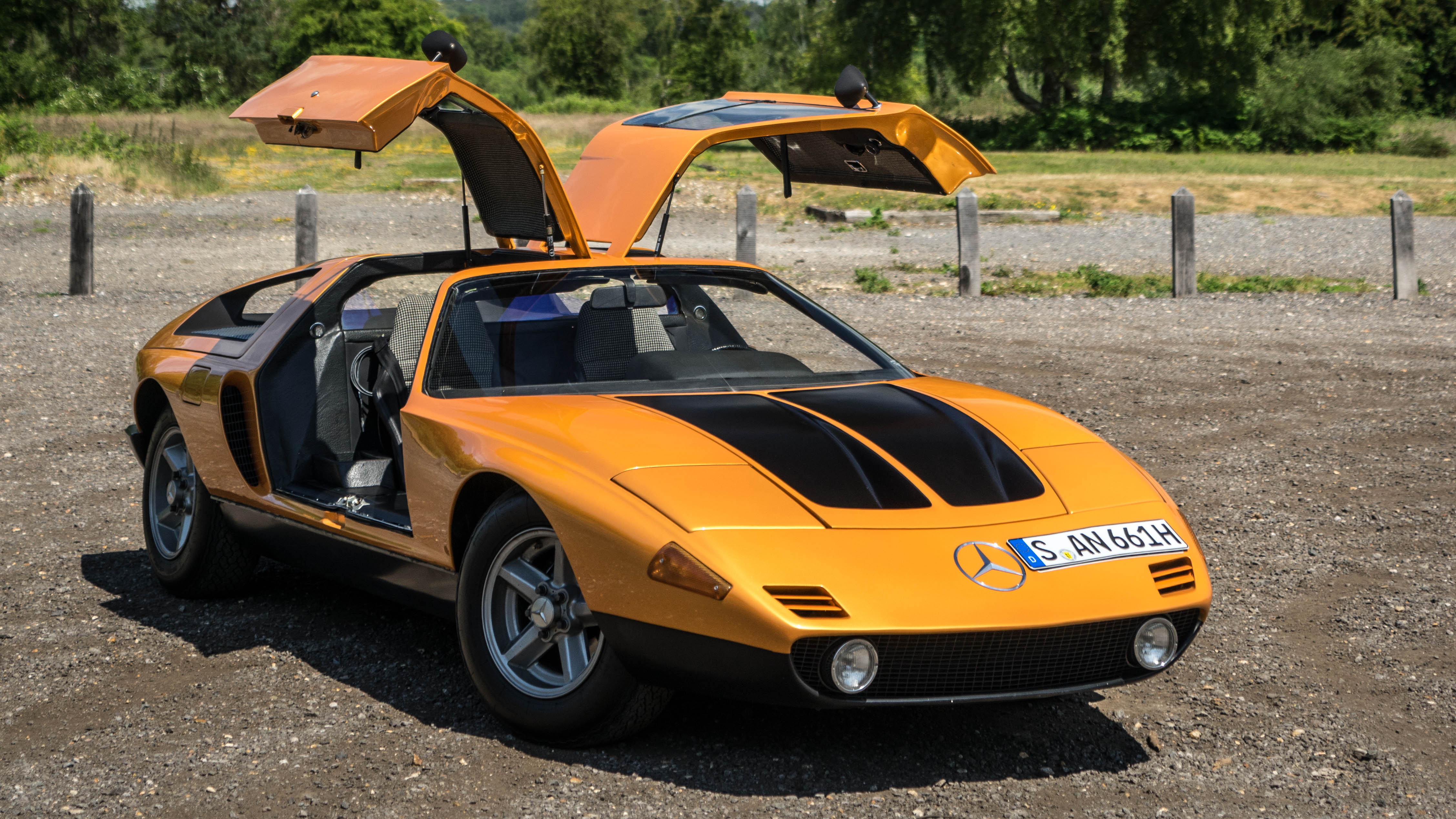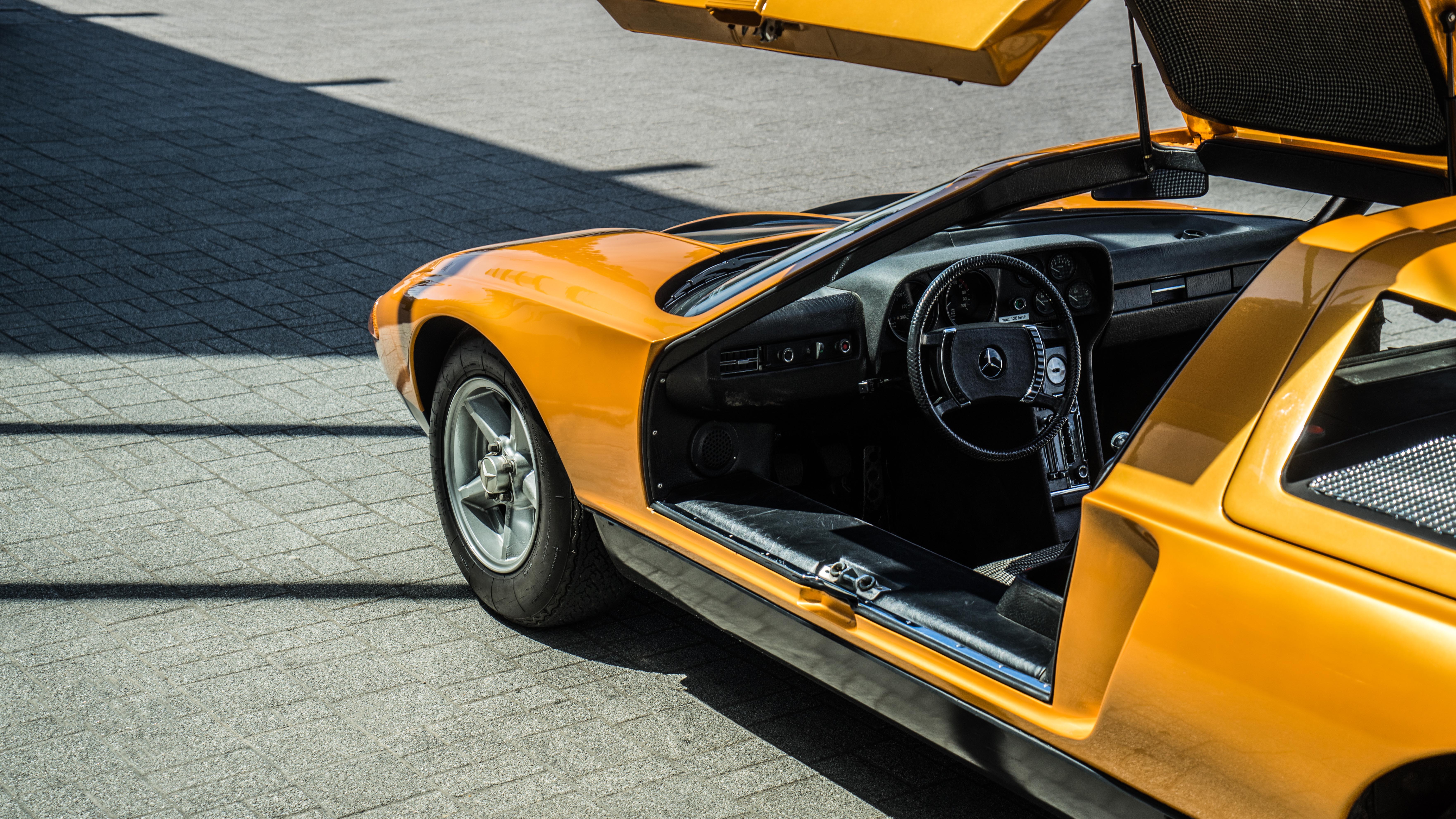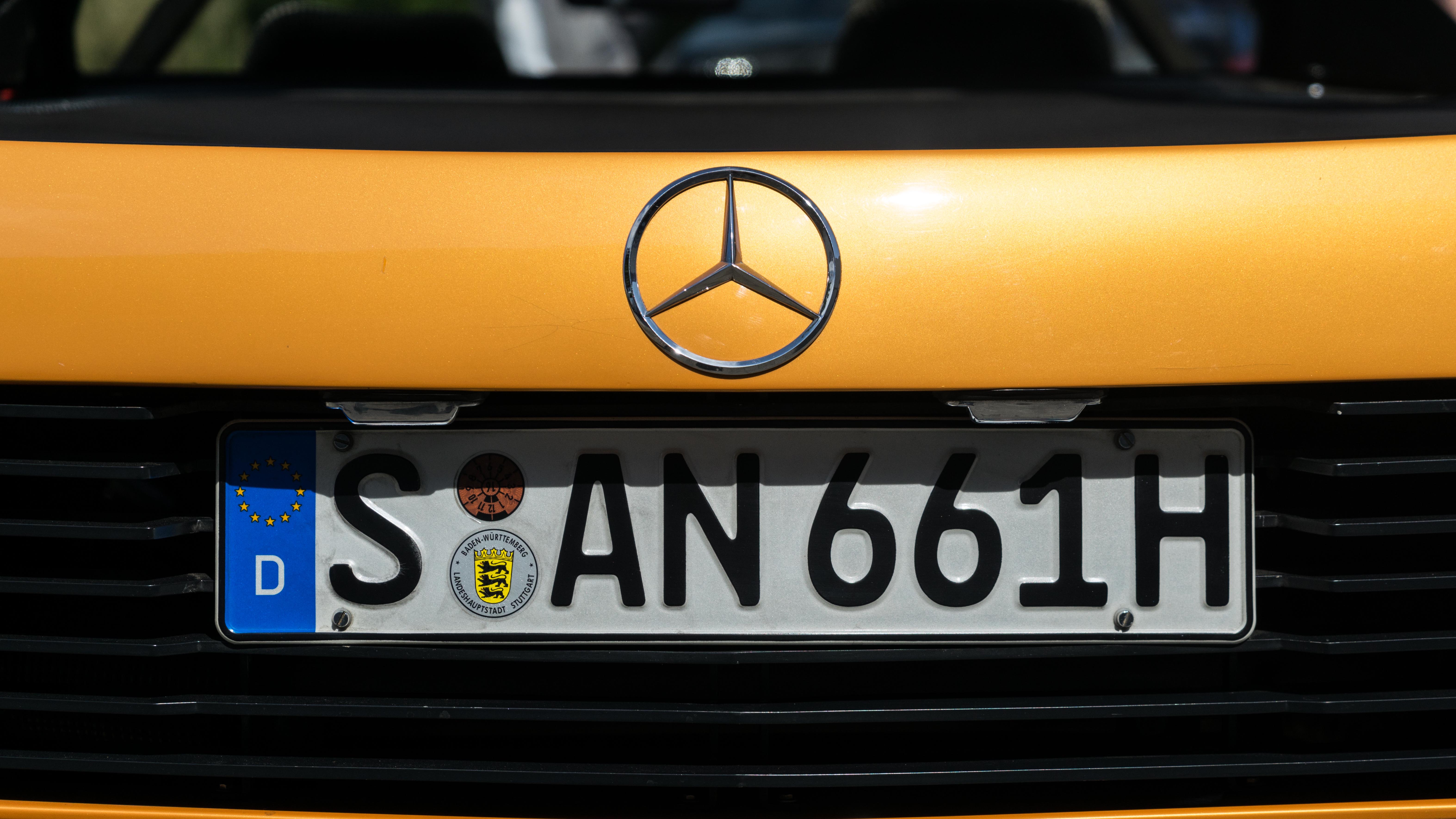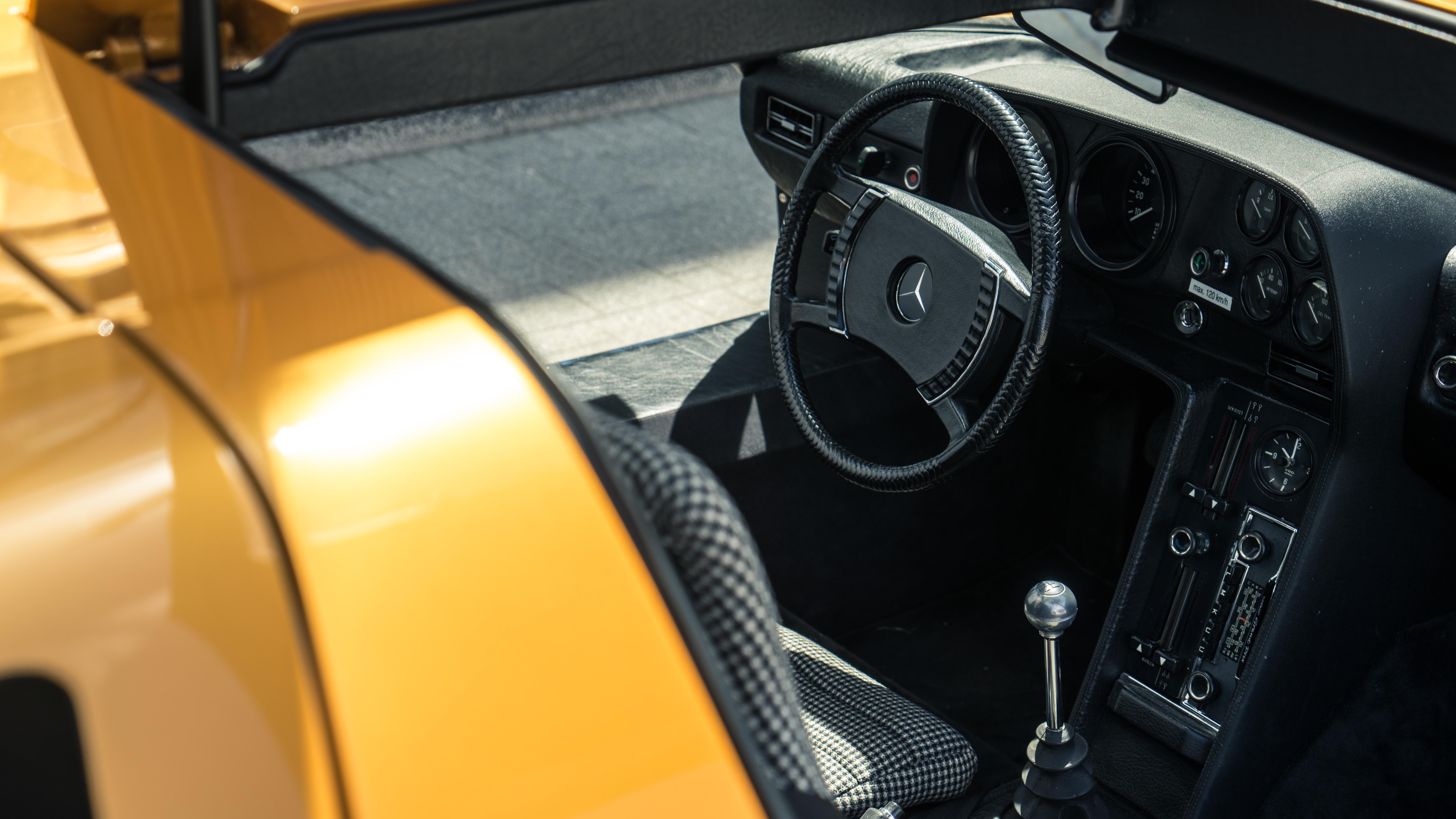
Driving Merc's revolutionary C111 concept
This is no ordinary concept. It works. And Merc has given us the keys...
Imagine being a car designer in the late Sixties. These guys let rip, and cars like Pininfarina’s Ferrari 512-based Modulo and Bertone’s Alfa Romeo Carabo or Lancia Stratos Zero were so far out, they invented a future we’re still waiting for.
Words: Jason Barlow
Photography: Richard Pardon
But the flamboyant, free-thinking Italians weren’t the only ones blazing a trail. The Mercedes C111 first appeared at 1969’s Frankfurt motor show, and its gullwing doors gave it immediate kinship with the 300 SL, the far-sighted and uniquely designed Merc that had fired the Fifties into the future. Typically for Mercedes, though, the C111 wasn’t just a sci-fi show car that chimed with the cosmic times (Apollo 11 had landed on the Moon just two months earlier). This was a fully functioning prototype, initially powered by Felix Wankel’s clever engine, a revolutionary technology that replaced reciprocating pistons with parts that rotate in the same direction.
Cool idea, and one that would be successfully mass produced by Mazda (though now abandoned), but Mercedes soon walked away from it. Cost, reliability and efficiency issues outweighed the 280bhp, triple rotor’s inherently smooth character and compact size.
It didn’t deter the C111’s evolution, though. In 1970, a further four were made, with various other versions emerging over the next decade, including groundbreaking turbodiesels and multiple record-breakers – in 1978, the ultra-low-drag C111-III averaged 186mph during a 12-hour run at a test track. A total of 14 would be made, marking the C111 out as more of a constantly mutating conceptual family than a lone star. Nine survive, three prototypes having been scrapped and one crash-tested into oblivion.
The C111 wasn’t just a sci-fi show car that chimed with the cosmic times
They’re currently being celebrated as part of a special exhibition at Mercedes’ magnificent Stuttgart museum (it runs until November), but a renegade C111 surfaced in the UK earlier this summer alongside Lewis Hamilton for London Fashion Week. When he was done with it, Mercedes asked TG if we fancied a go.
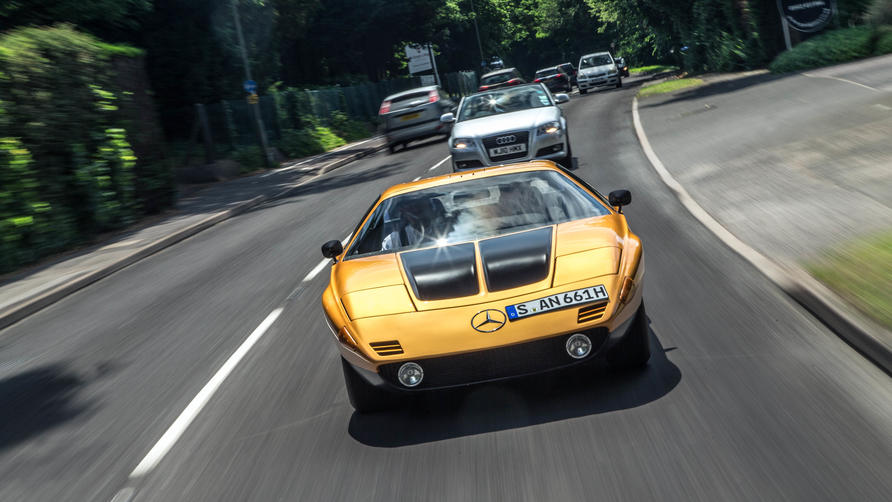
It’s also only possible because at some point in the early Seventies, Merc slotted the silky 230bhp, 3.5-litre V8 used by its saloons into a C111, and asked ZF to design a bespoke five-speed gearbox for it. In other words, it’s a proper runner, and it’s even been retrofitted with a modern engine management system. A man from Mercedes called Matthias is the guy responsible, and he’s here today to make sure this mobile museum piece actually makes it back there in one piece.
“So, erm, how much is it worth?” I ask, motioning to the sensational-looking orange-over-black mid-engined wedge with the anteater nose. “It’s very difficult to say,” he replies. “As it is such a special car. But I know that it is insured for €6m.”
Quite valuable, then, never mind its status and rarity.
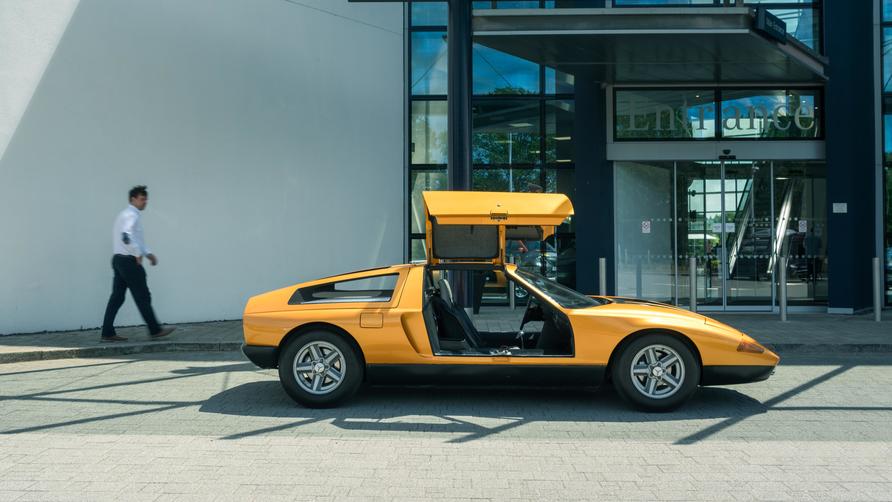
For a 45-year-old concept car, the C111 really is remarkable. Car companies regularly offer us drives in their latest show pony, but however eye-popping the top half might be, the underpinnings are often held together with sticky tape and glue, the resultant driving ‘impressions’ done on a wing and a prayer. At about 10mph.
Not here, though. Those famous doors need to be opened and closed carefully, but they’re properly engineered and thump shut as solidly as any other old-school Merc’s. The body is fibreglass, glued and riveted to a steel chassis, and the chunky sills house the fuel tanks. A pronounced side air intake feeds cooling air to the V8, but there’s a notable lack of ducts on the engine cover itself. Matthias says heat dissipation is fine.
Top Gear
Newsletter
Thank you for subscribing to our newsletter. Look out for your regular round-up of news, reviews and offers in your inbox.
Get all the latest news, reviews and exclusives, direct to your inbox.
The interior feels as well screwed together as any period Mercedes, and only the vertical centre console hints at the conceptual context. Even the air-conditioning works properly. The seats have a sturdy checked trim, the pedals line up properly with your feet, and the driving position is spot-on.
The V8 fires on the first turn of the key, and immediately settles into a mellifluous idle. First gear is on a dog-leg, and you need to push a little button nestled in the top of the gearlever to access it. But the action is smooth, and the C111 pulls away without a trace of judder or anguished clutch. I know mass-produced moderns that are harder work than this. It’s probably one of the most pampered cars on the planet, but even so, it’s surprisingly polite.
In fact, an unexpected issue soon arises. Although more than happy to cruise, the C111 is clearly capable of going a bit faster. Well, it would be rude not to. True to its experimental role, the car’s rear suspension featured a new multi-link set-up that would find its way into the next generation of Mercedes road cars. So it actually handles amazingly well, its tall, old-school tyres expertly riding the undulations and camber changes typical of Britain’s malnourished B-roads. It has grip to spare, although its recirculating ball steering – as per Mercedes form in this period of its history – is not overendowed with feedback. I expect bits of trim to start falling into my lap as we dart around potholes, but the C111 stays solid and resolute.
It’s almost impossible to define ‘cool’, but you know it when you see it. And this has it.




